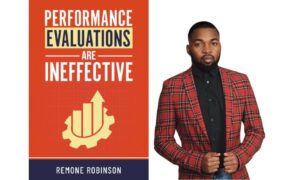When was the last time you walked into a boardroom or a meeting and saw faces that truly represented the diverse society we live in? It’s a question many in the business world find themselves asking. Companies across the UK are striving to bridge the gap in diversity and inclusion (D&I), but how effective are their efforts?
If you’re in a leadership position or part of an organization looking to foster genuine inclusivity, this article will help you understand how executive coaching can play a crucial role. We’ll dive deep into how coaching creates environments where diverse perspectives thrive and why this shift is essential for a successful, well-rounded organization.
The Unique Benefits of Executive Coaching for UK Businesses
Executive coaching UK businesses have increasingly adopted doesn’t just target individual growth; it paves the way for structural changes that promote inclusive leadership. With a targeted coaching program, executives can become more self-aware, empathetic, and adept at managing unconscious biases. This isn’t just about leadership styles; it’s about fostering a workplace where everyone feels valued, regardless of background or identity. Let’s take a closer look at the specific advantages:
- Enhanced Cultural Awareness: Through coaching, leaders learn to appreciate cultural nuances and manage diverse teams more effectively.
- Increased Retention Rates: Employees are more likely to stay when they feel understood and respected, which reduces turnover.
- Higher Innovation and Creativity: A mix of perspectives fosters a richer environment for brainstorming and problem-solving.
- Improved Decision-Making: Leaders with inclusive mindsets are equipped to make decisions that consider a wider array of experiences.
How Does Executive Coaching Influence Diversity and Inclusion?
1. What is the Real Role of Executive Coaching in Inclusion?
When we talk about diversity in business, it’s not just about hiring individuals from varied backgrounds—it’s about actively including them in meaningful ways. Executive coaching emphasizes behavioral change, guiding leaders to recognize their influence in fostering inclusive workplaces. By working on their interpersonal skills, leaders can make conscious decisions that allow everyone’s voice to be heard, creating an atmosphere where marginalized groups feel comfortable contributing ideas.
2. How Can Executive Coaches Address Bias?
We all have biases, many of which are unconscious. Executive coaching can help leaders identify these biases through structured feedback and reflective practices. Coaches can introduce strategies to challenge stereotypes and encourage inclusive behaviors actively. Some tools used in coaching sessions include:
- Implicit Bias Tests: To highlight underlying prejudices leaders may not be aware of.
- Role-Playing Scenarios: Helps leaders understand the perspectives of underrepresented team members.
- Mindfulness Techniques: Encourages self-awareness and allows leaders to approach interactions thoughtfully.
Real-Life Example:
Consider a tech company with a largely homogeneous leadership team. Through executive coaching, the team engaged in role-playing exercises that revealed their lack of understanding about the challenges faced by minority team members. As a result, they initiated regular feedback sessions with these employees, leading to improved morale and greater engagement across the board.
Practical Steps Executive Coaches Use to Drive Change
| Step | Description |
| Identify Biases | Use tools like surveys and 360-degree feedback to uncover hidden biases. |
| Set Clear Goals | Define specific inclusion goals tailored to the organization’s unique culture. |
| Develop Empathy | Engage in exercises that promote empathy towards all backgrounds. |
| Create Accountability | Establish metrics to track progress and hold leaders accountable. |
Building an Inclusive Culture Through Leadership
3. What Are the Core Attributes of an Inclusive Leader?
Inclusive leaders are characterized by their empathy, open-mindedness, and accountability. Executive coaching reinforces these traits, allowing leaders to adopt inclusive behaviors naturally. An inclusive leader listens actively, ensures their team feels valued, and advocates for fair policies.
Key attributes include:
- Cultural Competence: Understanding and appreciating different cultures.
- Fairness and Equity: Ensuring equal opportunities for advancement.
- Transparent Communication: Encouraging open dialogue and minimizing misunderstandings.
4. How Can Inclusive Leadership Boost Company Performance?
Studies have shown that inclusive organizations perform better financially and are more innovative. Companies in the top quartile for gender diversity are 21% more likely to experience above-average profitability, and those in the top quartile for ethnic diversity are 33% more likely to outperform their peers. Why? Because inclusive leadership drives employee engagement, reduces absenteeism, and fosters a sense of belonging among employees.
Common Challenges in Achieving True Inclusion and How Coaching Can Help
5. Why Do Organizations Struggle with Inclusion?
Many companies approach D&I with the best intentions but stumble due to lack of clarity, inconsistent policies, or tokenism. Tokenism refers to making only a symbolic effort to appear diverse without making meaningful structural changes. Executive coaching can help companies avoid these pitfalls by offering targeted guidance that holds leaders accountable for genuine change.
Key Challenges Addressed Through Coaching:
- Overcoming Tokenism: Coaches encourage leaders to take concrete actions beyond superficial hires.
- Consistency Across Departments: Ensures that inclusive practices are not isolated but implemented across the organization.
- Breaking Down Siloes: Coaches promote cross-departmental collaboration, helping diverse teams work better together.
6. How Do Executive Coaches Hold Leaders Accountable?
A common issue with D&I initiatives is the lack of accountability. Executive coaches implement systems where progress is measured, not only on diversity metrics but also on inclusion practices. For instance, if a company sets a goal to improve gender representation in leadership, a coach may work with leaders to ensure that:
- Promotion Pathways are open to all genders.
- Mentorship Programs are in place to support underrepresented employees.
- Feedback Mechanisms are regularly reviewed to check for any form of bias or discrimination.
The Impact of Executive Coaching on Team Dynamics and Employee Well-being
7. How Does Coaching Help in Building Respectful Team Dynamics?
Diverse teams thrive in an environment of mutual respect. Executive coaching can significantly improve team dynamics by teaching leaders the importance of active listening and constructive feedback. When leaders model respect, employees feel empowered to bring their full selves to work, enhancing both productivity and morale.
8. Can Coaching Improve Employee Satisfaction and Retention?
Yes. When employees feel respected and heard, they are more likely to remain loyal to the company. By creating a positive work culture, coaching reduces turnover and boosts morale. This, in turn, saves the company money on recruitment and training, as well as fosters an environment where employees feel a sense of loyalty and purpose.
Key Strategies to Drive Diversity and Inclusion Through Executive Coaching
9. What Strategies Do Coaches Use to Make Lasting Changes?
- Mentorship Programs: Pairing underrepresented employees with senior leaders for growth and guidance.
- Inclusive Hiring Practices: Implementing unbiased recruiting methods to build diverse teams.
- Bias Training: Regular workshops to raise awareness of bias and promote inclusive behaviors.
- Feedback Loops: Establishing open lines of communication for employees to share experiences.
10. How Can Small and Medium Enterprises (SMEs) Benefit from Executive Coaching for D&I?
While large corporations often lead the way in D&I initiatives, small and medium businesses can benefit just as much from executive coaching. By building an inclusive culture, SMEs can attract a wider talent pool and cultivate a loyal customer base that values diversity. For SMEs, executive coaching offers practical, scalable solutions tailored to limited resources.
Example:
A mid-sized retail company in the UK implemented executive coaching to address feedback from minority employees who felt unheard. Through structured feedback loops and targeted bias training, the company improved its reputation and saw a marked increase in employee satisfaction.
Conclusion: A Lasting Commitment to Diversity and Inclusion
Building a truly diverse and inclusive workplace is an ongoing process, not a one-time initiative. Executive coaching provides leaders with the tools, strategies, and accountability needed to make lasting changes. When leaders are equipped to embrace diversity in all its forms, companies can expect not only a stronger, more resilient workforce but also improved business performance.
Through self-awareness, empathy, and accountability, executive coaching supports leaders in becoming champions of inclusive workplaces. Diversity is not just a checkbox—it’s an asset that, when genuinely nurtured, transforms businesses and strengthens teams across the UK.





























